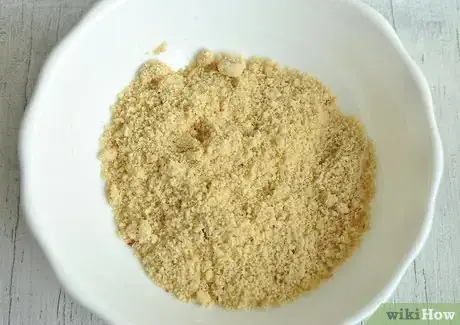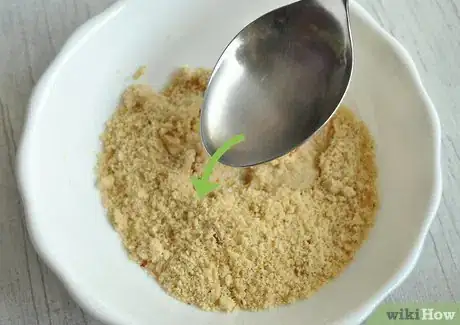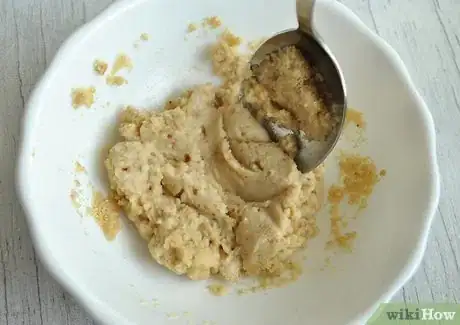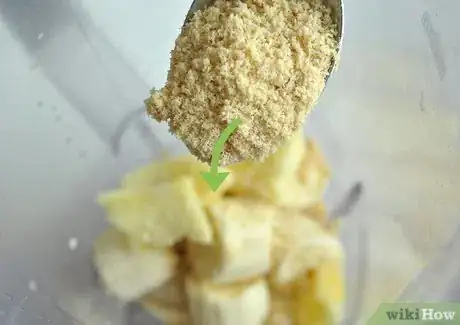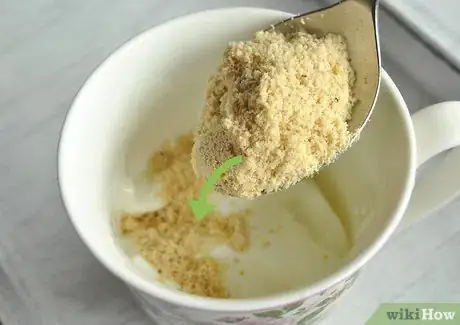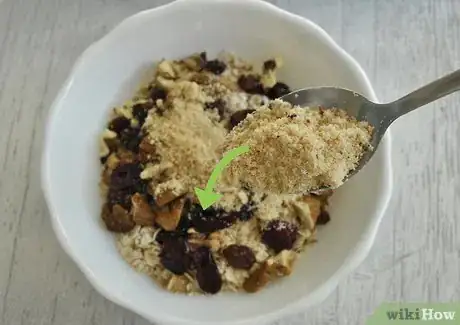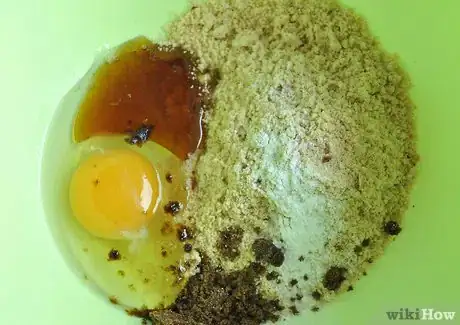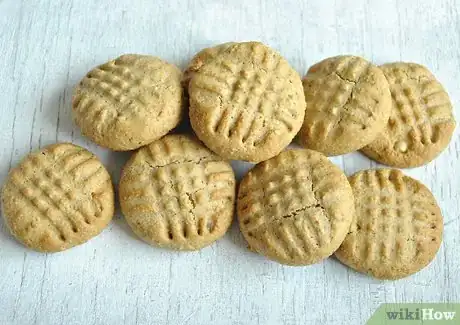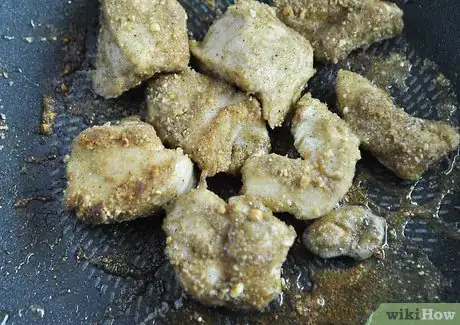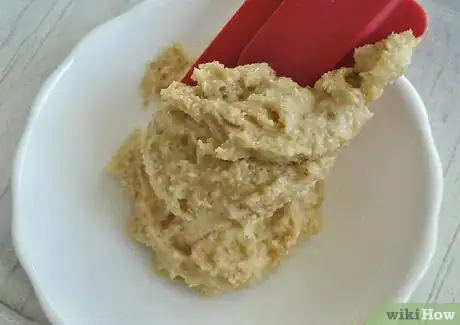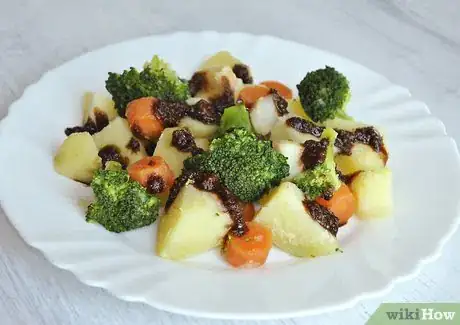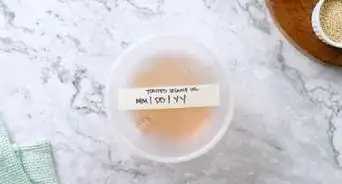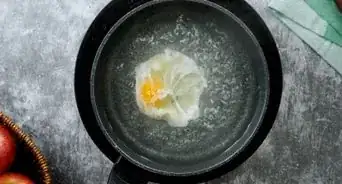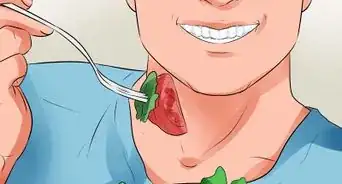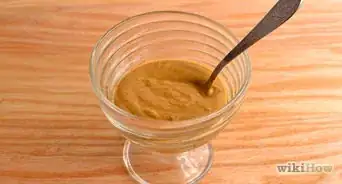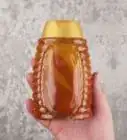This article was co-authored by wikiHow Staff. Our trained team of editors and researchers validate articles for accuracy and comprehensiveness. wikiHow's Content Management Team carefully monitors the work from our editorial staff to ensure that each article is backed by trusted research and meets our high quality standards.
There are 9 references cited in this article, which can be found at the bottom of the page.
This article has been viewed 21,726 times.
Learn more...
Powdered peanut butter is created by pressing peanuts together to form a powder. This process removes a lot of the oils and fats and it can be used as a healthier alternative to traditional peanut butter.[1] When reconstituted, powdered peanut butter resembles classic peanut butter and the powder itself can serve as a versatile ingredient. You can add the powder to foods like granola or yogurt to enhance their taste or you can use it as a partial replacement for flour in baked goods. By following the correct techniques, powdered peanut butter can be a useful ingredient in your kitchen.
Steps
Reconstituting the Powder
-
1Scoop 4 tbsp (24.56 grams) of powdered peanut butter in a bowl. Use a scale or measuring spoons to measure the powdered peanut butter. Level off the tablespoon and dump four of them into a dry mixing bowl.[2]
- This will be the bowl you'll use to mix your powder into creamy peanut butter.
-
2Pour 2 tbsp (14.78 mL) of water in the bowl. Measure out 2 tbsp (14.78 mL) of water from the faucet, or you can use distilled water from a bottle. Pour the water into the mixing bowl on top of the powder.
- The water will pool on top of the powdered peanut butter until you mix it.
Advertisement -
3Mix the water and powdered peanut butter until it's smooth. 4 tbsp (24.56 grams) of powdered peanut butter will make 2 tsp (12.28 grams) of spreadable peanut butter. Powdered peanut butter will come out to be more gritty in texture to its spreadable counterpart.[3]
- If your peanut butter is too thick, you can add more water.
-
4Spread the powdered peanut butter on bread or crackers. Once you finish the reconstituting process, the peanut butter should be ready to eat. Powdered peanut butter in powder form has a shelf life up to 10-12 months unopened. After you reconstitute your peanut butter, however, you must refrigerate it, and it goes bad in 48 hours.
- Try to reconstitute the peanut butter as you eat it so that it tastes fresh each time.
Adding the Powder to Simple Dishes
-
1Add powdered peanut butter to smoothies or shakes. Adding powdered peanut butter to a smoothie or shake will add a peanut flavor while also adding essential protein to your shakes. To use the powder, add 1 tbsp (6.14 grams) of powdered peanut butter for every cup (250 milliliters) of smoothie or shake that you have. Make sure to blend it together so that the powder is no longer gritty and enjoy a low-fat but protein-rich drink.[4]
- Powdered peanut butter tastes great in banana smoothies.
-
2Mix powdered peanut butter into yogurt. Powdered peanut butter will break down in yogurt more easily than the creamy variation and will alter the texture of your yogurt less. Add a tablespoon (6.14 grams) of powdered peanut butter to a half cup (122.5 grams) of yogurt. Mix it together until the yogurt is smooth and eat it.[5]
- Experiment with different amounts of powdered peanut butter and add an amount that suits your tastes.
-
3Stir the powder into oats or granola. Adding peanut powder to your granola adds more of a nutty and sweet taste to it. Simply sprinkle a pinch of peanut butter powder over your granola and stir it in. Add more or less depending on your preferences.[6]
- Avoid adding it to chocolate granola because it may muddle the flavors and create a bad taste.
-
4Add it to pancake or waffle mix. You can replace up to 1/3 of your pancake or waffle mix with powdered peanut butter. Not only will the powder add a peanut taste to your breakfast, but it'll also pack protein in your waffles or pancakes as well. Mix your pancake mix as you normally would, but replace 1/3 of the total amount of mix with powdered peanut butter instead.[7]
Cooking with Powdered Peanut Butter
-
1Replace creamy peanut butter with the powdered variation. If you're looking to reduce the fat in your favorite recipes, you can use powdered peanut butter instead of the creamy variety. Simply replace the peanut butter that a recipe is calling for with reconstituted peanut butter.[8]
- Keep in mind that the texture of powdered peanut butter is different, and it will translate to the texture of your food.
- When measuring the powder, keep in mind that 2 tablespoons (6.14 grams) of powder will create 1 tablespoon (6.14 grams) of peanut butter.
-
2Use it to replace flour in baking recipes. You can use the powder in baked goods like brownies, cookies, and muffins. When making 12 servings of brownies, for instance, use 1 cup (294.7 grams) of powdered peanut butter as a replacement for flour in the recipe. [9] You can also create peanut butter cookies, replacing flour with the powdered peanut butter and fruit puree, like applesauce.
-
3Coat meat with powdered peanut butter. Use a half a cup (147.36 grams) of powdered peanut butter with a half a cup (60 grams) of flour to creating your powder coating. Add in spices like salt and pepper and sift the coating thoroughly. Once it's mixed, you can coat your proteins with the flour and the peanut butter mixture. After you're done coating your meat, fry or bake your food as you normally would. This will impart a subtle peanut butter taste to your coating.[10]
- This recipe is especially good with poultry.
- You may need to dredge your protein in an eggwash to better bind the coating to your meat.
-
4Whip it into a frosting. To create a frosting using powdered peanut butter, combine 1 cup (227 g) of softened butter with 1/2 cup (147.36 grams) of powdered peanut butter, 3 cups (600 grams) of sugar, and 3 tablespoons (44.36 mL) of milk or almond milk and beat the ingredients together with a food processor or mixer until they are light and fluffy.[11]
-
5Use it to create a sauce. You can create a Thai-inspired sauce using powdered peanut butter. To create the sauce, combine 1/4 cup of powdered peanut butter with 2 tbsp light coconut milk and 2 tbsp of soy sauce. The finished result will taste salty and sweet.[12]
- This sauce can be used as a dipping sauce for appetizers like dumplings.
- You can also use it as a salad dressing.
References
- ↑ https://www.thekitchn.com/whats-the-deal-with-powdered-peanut-butter-ingredient-intelligence-201059
- ↑ http://www.epicurious.com/ingredients/how-to-cook-with-powdered-peanut-butter-recipes-tips-article
- ↑ https://www.thekitchn.com/whats-the-deal-with-powdered-peanut-butter-ingredient-intelligence-201059
- ↑ http://www.unconventionalbaker.com/recipes/the-most-filling-peanut-butter-banana-smoothie/
- ↑ http://www.salad-in-a-jar.com/family-recipes/chocolate-peanut-butter-greek-yogurt
- ↑ http://www.epicurious.com/ingredients/how-to-cook-with-powdered-peanut-butter-recipes-tips-article
- ↑ http://simmerandboil.cookinglight.com/2015/07/31/what-is-peanut-butter-powder/
- ↑ http://spoonuniversity.com/lifestyle/powdered-peanut-butter-recipes
- ↑ http://www.skinnytaste.com/pb2-flourless-chocolate-brownies/
